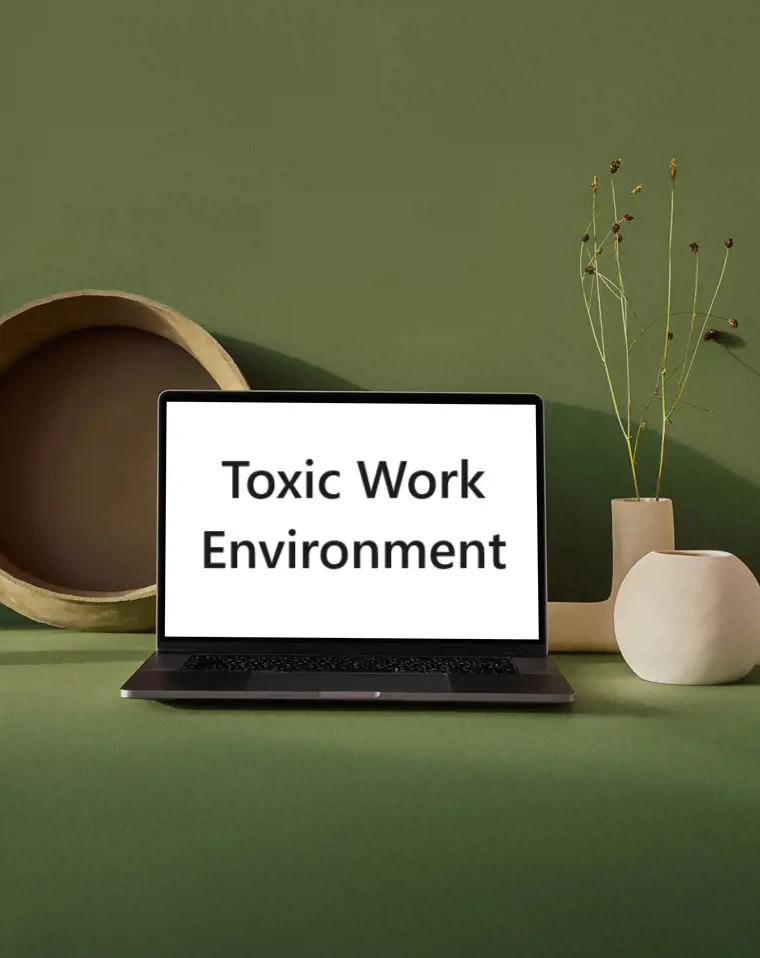
Toxic work environment signs often include poor communication, high turnover, and a pervasive sense of negativity.
Recognizing these signs is crucial in taking steps to address or navigate the situation effectively for your well-being and professional growth. This article guides you through some of the signs that define a hostile work environment and some major tips to avoid it. Without ado, let's find out whether or not you have a toxic workplace.
1. Poor Communication

Poor communication can be a primary source of chaos and toxic work environment signs. It catalyzes confusion, inefficiencies, and misunderstandings. Unclear information, vague instructions, or incomplete messages create a landscape where mistakes thrive and productivity suffers.
This lack of clarity impacts tasks and deadlines and strains relationships and trust among colleagues. Clear and precise communication is the cornerstone of a healthy work environment, ensuring everyone their roles, tasks, and expectations clearly.
2. Micromanagement

Micromanagement involves excessive control and scrutiny over employees' work, stifling autonomy and creativity. This intrusive behavior, often stemming from a lack of trust or insecurity, breeds a toxic environment in the workplace.
It demotivates employees, erodes confidence, and hampers innovation. Micromanaged individuals feel suffocated, incapable of making decisions, and may even fear reprisal for taking initiative. This approach impedes growth, fosters resentment, and ultimately leads to decreased productivity.
3. High Turnover

Frequent turnover among employees signifies a concerning trend within a workplace. High turnover rates often reflect deeper issues, indicating a toxic environment. When employees consistently leave, it disrupts workflow and incurs financial costs for recruitment and training.
It's a red flag pointing to underlying problems such as poor management and lack of growth opportunities. Addressing the root causes behind the turnover is crucial for fostering a stable and healthy work environment that encourages employee retention and satisfaction.
4. Lack of Support

Working in an office setting, employees require support and motivation to thrive. However, a lack of support within the workplace can be detrimental. It makes employees feel unsupported by their peers or supervisors and affects their morale, confidence, and job satisfaction.
Without guidance or encouragement, individuals may struggle to navigate challenges or feel isolated. Additionally, a lack of support fosters an environment where collaboration and teamwork suffer, hindering the achievement of common goals.
5. Bullying or Harassment

The use of verbally abusive words in a working space often signals a more significant issue: bullying or harassment. Verbal abuse, whether explicit or subtle, undermines an individual's confidence, leading to stress, anxiety, and even health issues.
It erodes trust in colleagues and the organization, impacting collaboration. Establishing zero-tolerance policies and fostering a respectful, inclusive environment is crucial to eradicating bullying and harassment, and ensuring a safe workplace for all.
6. Unrealistic Expectations

Overloading employees with tasks and setting unrealistic expectations is a surefire way to breed a toxic work environment. When individuals are burdened with an excessive workload or pressured to achieve unattainable goals, it creates stress and burnout.
This overload affects mental health, leading to exhaustion and demotivation. Balancing expectations with realistic workloads is essential for a healthier workplace, enabling individuals to perform effectively without compromising their well-being.
7. Blame Culture

Blame becomes a default response when organizations prioritize fault-finding over problem-solving. It often arises from a combination of fear, insecurity, and a lack of accountability within the organizational structure.
To break this cycle, organizations must encourage transparency, open dialogue, and accountability without the fear of retribution. Shifting the focus from fault to understanding the root cause of issues helps create a culture where individuals feel safe to admit mistakes.
8. Lack of Recognition

Are you being acknowledged for your contributions in the workplace? The absence of recognition for employees' efforts is a telltale sign of a toxic environment. When hard work goes unnoticed or unappreciated, it breeds demotivation and a sense of undervaluation among individuals.
Employees might feel disengaged or unconnected to the organization's goals, leading to decreased commitment. Implementing a culture of recognition and appreciation, where achievements are acknowledged and celebrated, is crucial for fostering a positive work environment.
9. Unequal Treatment
Giving preferential treatment or unequal opportunities among employees creates a toxic environment within the workplace. Trust is damaged and animosity is fostered when some members of the team are given preferential treatment or are held to alternative standards.
Favoritism in assignments, promotions, or lax enforcement of rules are just a few examples of how unequal treatment can appear. Workers' commitment and output may suffer if they feel demoralized and underappreciated.
10. Stagnation

Stagnation within a workplace often stems from a lack of opportunities for advancement or professional development. The absence of avenues for skill enhancement or career growth stifles motivation and ambition.
People could grow complacent if they don't have the chance to grow, learn, or take on new challenges. Establishing avenues for ongoing education, skill enhancement, and professional progress is crucial for averting stagnation and promoting a dynamic atmosphere.
11. Poor Leadership

Poor leadership is a direct result of inconsistent or inept management, which also poisons the workplace environment. Employees get confused and uncertain when leadership is inconsistent or fails to offer helpful guidance.
Furthermore, ineffective management might result in a lack of direction, unclear goals, or an inability to address team needs, leading to frustration and a lack of trust in leadership. Strong, reliable leadership is crucial for setting a positive tone and providing clear direction.
12. Work-Life Imbalance

When leaders invade employees' personal lives, it often contributes to a significant work-life imbalance. Blurring the boundaries between professional and personal spheres disrupts employees' ability to unwind and recharge outside work hours.
This invasion manifests as excessive after-hours communication, unrealistic expectations for constant availability, or pressure to prioritize work over personal commitments. Such practices lead to stress, burnout, and strained personal relationships.
13. Unrealistic Deadlines

Unrealistic deadlines create immense pressure and stress in the workplace. Unrealistic deadlines not only affect individual performance but also impact team dynamics and overall productivity.
Employees may feel overwhelmed and demotivated and may struggle to meet the imposed expectations. Establishing reasonable and achievable timelines is essential as employees can deliver their best work without experiencing undue stress or sacrificing quality.
14. Lack of Transparency

Not sharing an adequate level of information within a workplace cultivates an environment of uncertainty and distrust. It can manifest in various ways, such as vague communication, undisclosed changes, or undisclosed motives behind decisions.
An environment that is more cohesive and knowledgeable is created at work when open lines of communication are established and pertinent information is shared. This empowers staff members, develops trust, and gives them a sense of belonging.
15. Resistance to Change

Having an undynamic working environment often leads to resistance to change. This resistance might stem from fear of the unknown, a comfort with the status quo, or a lack of understanding about the benefits of change.
However, clinging to outdated practices stifles innovation and progress. Embracing a culture that encourages flexibility, welcomes innovation, and values continuous improvement is essential to overcome resistance to change.
How To Deal With A Toxic Work Environment?

Working in an environment full of toxicity may be draining for many employees. In order to relieve you from such a natural working place, one can follow the tips below.
- Documentation is Key: Keeping records of concerning incidents or behaviors is crucial. Detailed documentation can provide evidence or support when addressing issues with HR or management.
- Prioritize Self-Care: Amidst a toxic environment, focusing on your well-being is essential. Engage in self-care practices to manage stress and maintain mental and emotional health.
- Seek Support Networks: Building a support system with trusted colleagues, friends, or mentors can provide guidance and perspective. Discussing concerns with those you trust can help you navigate challenging situations.
- Explore Alternatives: Considering internal transfers or opportunities outside the company allows you to assess options for a healthier work environment. Sometimes, a change of scenery can be the best solution.
- Know Your Rights: Understanding your rights in the workplace is empowering. Seek legal advice if necessary to protect yourself and navigate the situation effectively.
Remember, every situation is different, and the best course of action might vary. Trust your instincts and prioritize your well-being.

